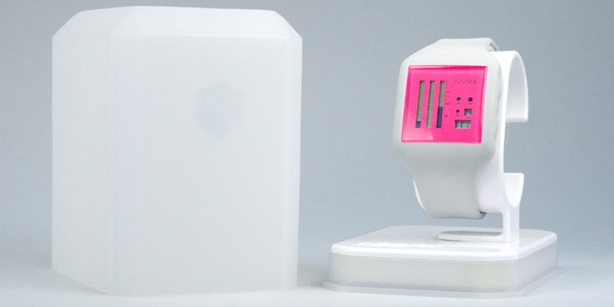I’m frequently reminded that as a designer, my responsibilities to the environment and my fellow human beings are relative to…well, nothing. This isn’t to say that there aren’t frameworks like The Living Principles for us to evaluate the process of creating good/ethical/sustainable design, but none of these guidelines come with values built into them. No one can go in and say that “The Environment” is always the primary group of concerns while the other groups, Economy, Culture, and People are subordinate. This lack of intrinsic value makes value evaluations not merely subjective but potentially self-defeating.
Feel free to protest. But let’s be honest. In any number of sustainability initiatives, methodology and sheer good will, by what reference point do we go in order to determine what is fair effort and what is not? More importantly, is it possible to formulate a value hierarchy to our good design frameworks on a case-by-case basis in a way that has meaning?
Last August, the fashion company Nooka developed new packaging for their Zub 40 line products. The glueless design used a series of tabs and minimal material to contain one of their signature watches. Some minor online criticism expressed a concern that this was not necessarily any more sustainable than a glued box. While that may or may not be true, the fact is that most watch boxes are full of plastic and other difficult (or impossible) to recycle elements.
Relatively speaking, this is a sustainable box. This was designed for good. But if you take a relative-to-Nooka stance, you’ll discover that they have also made food-grade silicone packaging that can be used and reused for any number of useful applications, including holding your miso soup for lunch.
What a surprise: your watch can keep time and its packaging can help keep you fed. Compared with the paper box, I’m tempted to say that the upcylable box is more “good”.

But you probably didn’t really need a soup bowl. So should you not buy either one, in a stalemate of design goodness? No, of course not. It just means you are measuring the relativity of design goodness with a magnifying lens. Time for perspective. Time for a reference point.
Sustainability, anymore, is only a relative term against something that isn’t sustainable. This is actually a good thing because it has a built-in reference point. If you can break the non-sustainability hurdle, you have achieved a mark of success. The real problem is that people keep comparing and weighing sustainability against itself, so that the only thing that actually looks sustainable is doing nothing at all. Like the watch packaging problem, relativity needs to be considered in our design practice against the right points of reference to avoid pitfalls and maximize the potential for discovery.
There are endless examples of relativity in practice. How about a can of soda? Some principled folk will argue that soda is unsustainable because it might cause health issues when frequently consumed. All of the value is placed on the soda itself and not on the culture that thinks it is ok to drink it by the gallon. Relative to societal demand, the soda isn’t going away any time soon. Although there are hundreds of considerations that go into the manufacture of the soda beyond health issues, we may be able to just affect the can.
Because the soda can is going to be produced anyway, the thing that will help most is making the can recyclable and—even better—easy to recycle in the first place. The can deposit is an example of one of the most effective recycling campaigns ever.
It compared two primary issues relative to themselves: The first was that the aluminum in the cans is valuable and completely reusable, the second is that people like the path of least resistance and would either throw the cans away, or litter. Rather than try to eliminate the can, the deposit system ensured that most people would think about the can after consumption in value terms relative to themselves. The simple genius of this is that it creates the idea that it matters personally how you dispose of the can. Nowadays people may not return cans to deposit, but they’re certainly more inclined to recycle them (6.4% recycling in 1960 compared to 34.1% in 2010).
Argue all you want about what’s in the can, but this was an idea that worked relative to the problem and relative to what could be accomplished realistically.
In the graphic arts, relativism can also affect non-physical products, even down to messaging. Can one influence a cultural education on relativism for good? Can that be a goal?
People get confused when they don’t have reference points. Give them plenty of markers. Give them choice, but make it relevant. Most of all, empower them to understand why designers make the decisions we do. In the end, the mystery of relativism exists only if we think that Einstein alone can understand it.